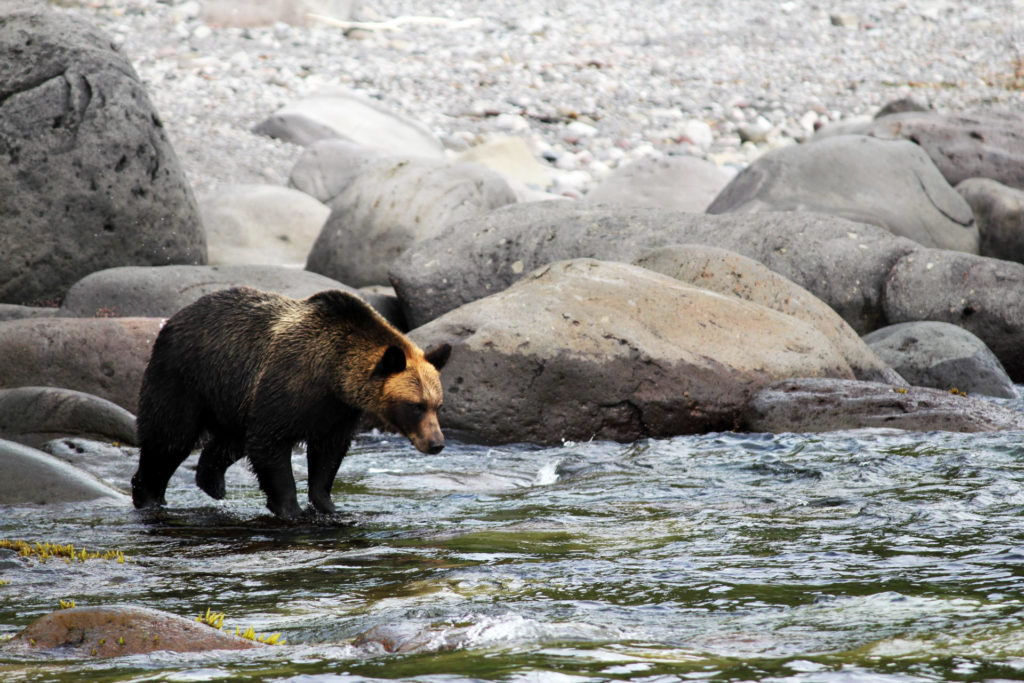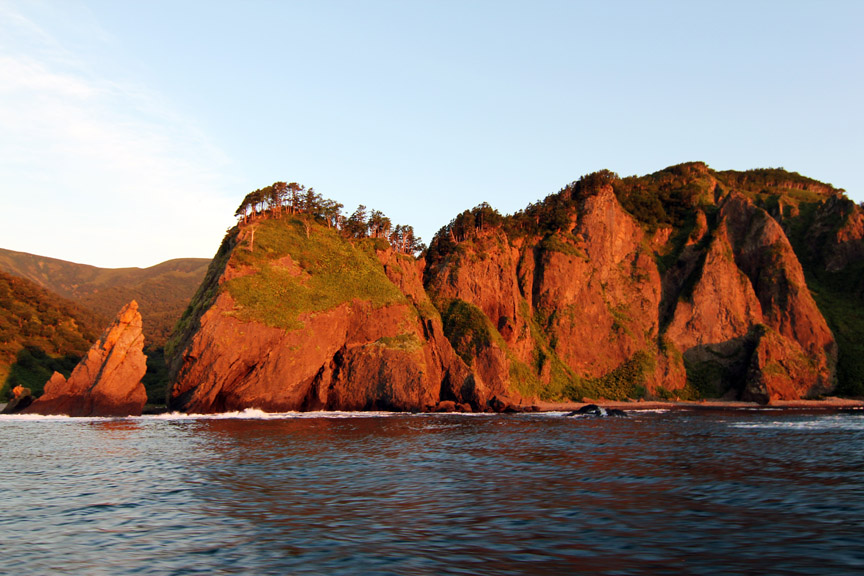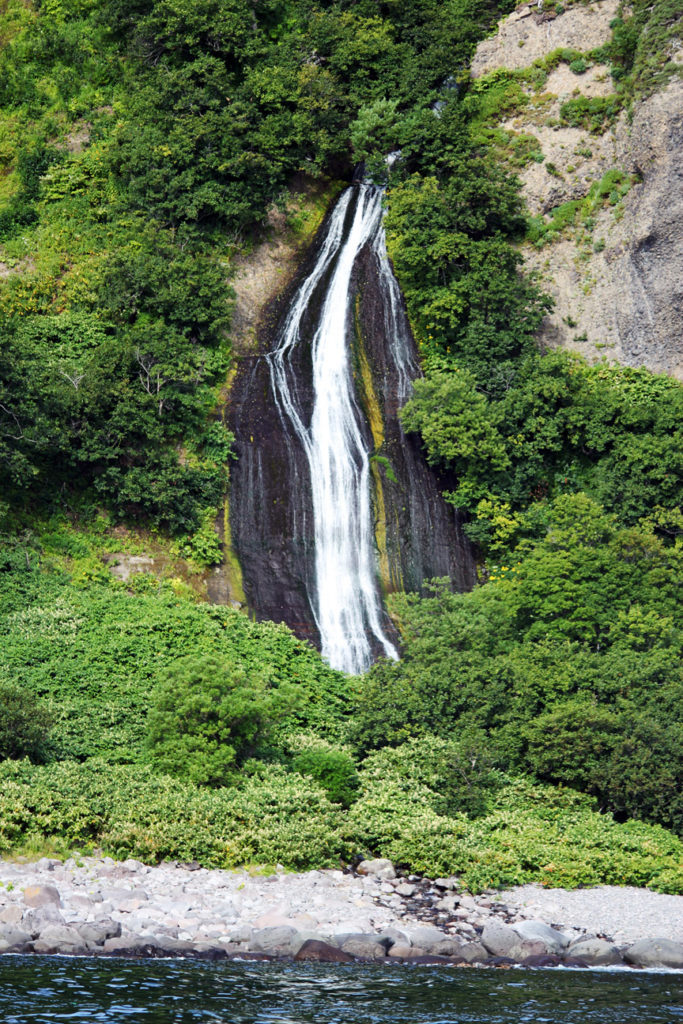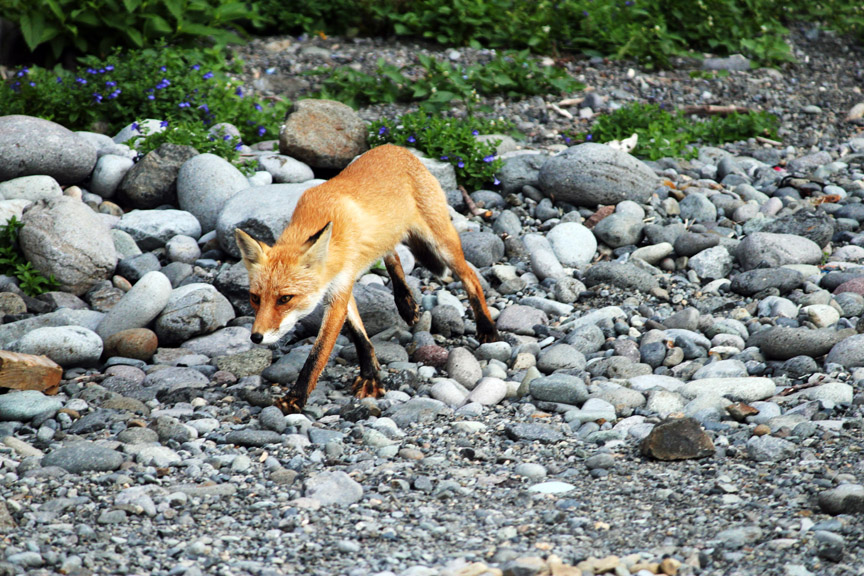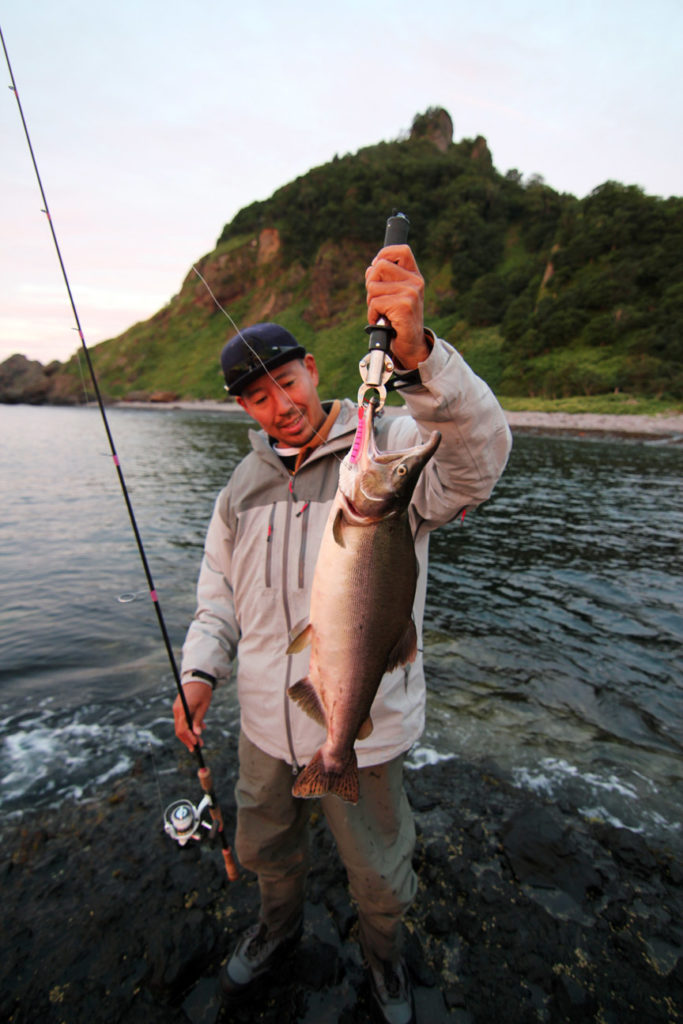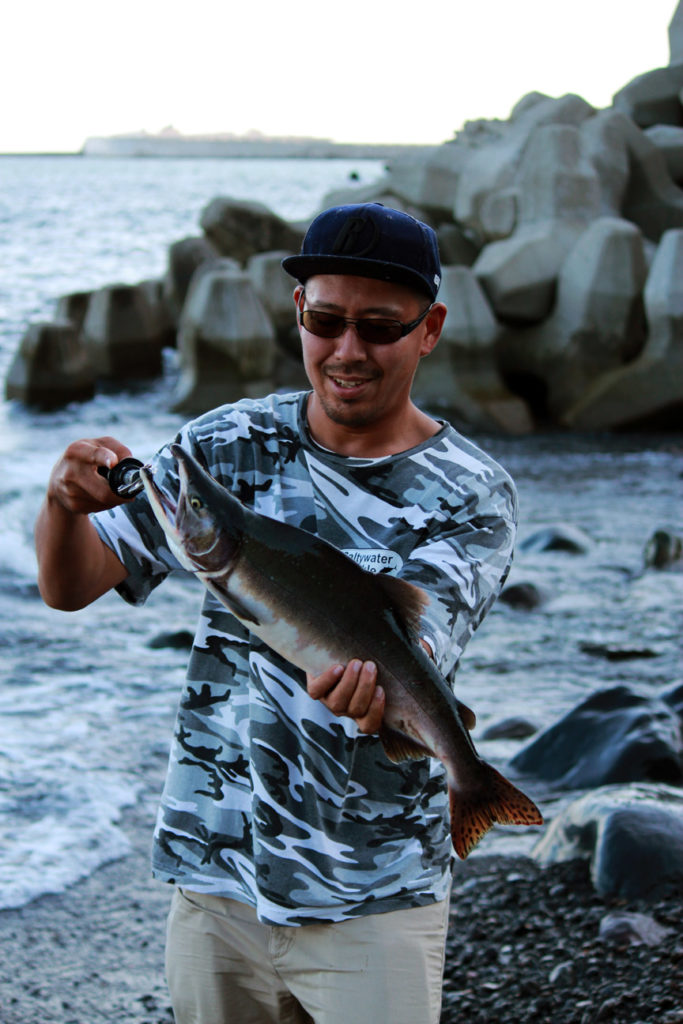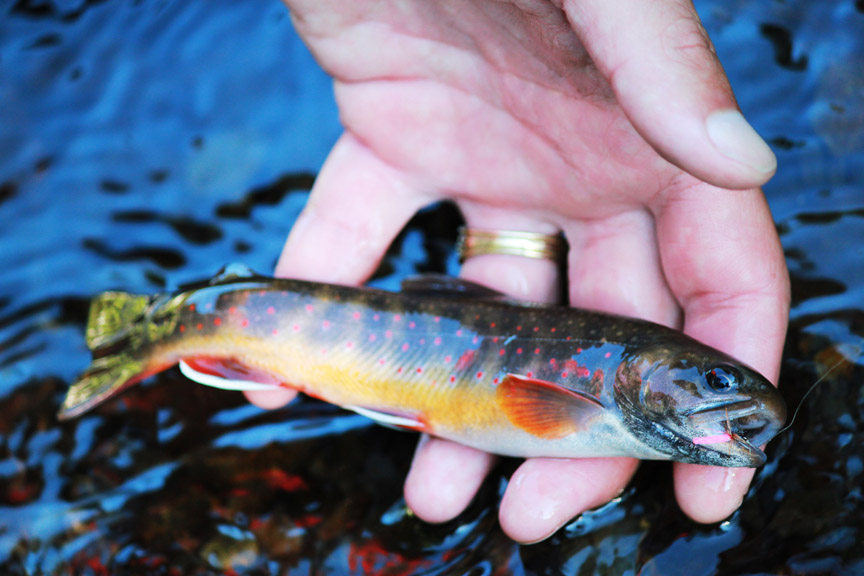The forest was as pristine as one could possibly hope. We heard nothing but the tree branches rustling in the breeze and the flow of the Akan River just ahead of us. It was a perfect moment until the frightful thought of potentially encountering yet another bear summarily popped into my mind. I thought to myself, “If I’m running the risk of getting mauled, this river had better be worth it.”
At this point my friends and I were at the tail end of what had been a pretty epic fishing trip to the northeast corner of Hokkaido. Over the previous three days we had made so many good catches and became so keyed into pursuing the next fish, it seemed we could lose our sense of passing time. There, in the backcountry, words such as “Wednesday” and “itinerary” had no meaning, and the future was simply what was around the next bend of the river.
The Akangawa was to be our last session of the trip and it did not disappoint. Upon reaching the riverbank I glanced up and downstream, setting my sights on a stretch of river that looked deep enough to hold fish. All it took was one cast, and my line was tight with what turned out to be the most beautiful rainbow trout I ever had the pleasure to capture and release.
Any thoughts of bears quickly took a back seat to the giddiness I felt knowing my buddies and I had this entire river to ourselves.
Three days earlier, we had touched down in Kushiro, got in a rental car and headed straight for the Rausu coast on the Shiretoko Peninsula. A boat ride from the northernmost port revealed a coastal landscape like none other I’ve seen in Japan. Rocky cliffs topped with brilliant green foliage shoot up from the sea as high as a hundred meters in some places.
Rolling swells collide with giant jagged rocks around which the guides skillfully maneuver their skiffs while ferrying anglers to their drop-off points. The whole area is wild, virtually untouched and could be mistaken for the coastline of Tolkien’s Middle Earth. Had we not caught any salmon, the scenery alone would have made the trip worthwhile.
Across from the peninsula lies Kunashiri-to, the first of the Kurile Islands, which clearly looks to be part of Japan despite being controlled by Russia since the end of the second world war. I spoke with a guide who said a few Japanese commercial fishing vessels occasionally approach the island to fish, despite the risk of being detained.
During the Cold War, I suspect the locals were less concerned about the Reds invading than being mauled by wildlife. There are more deer than humans in these parts, foxes roam about right in front people as if they are stray pets, and the resident brown bears consider themselves to be at the top of the totem pole.
During two mornings spent fishing the Shiretoko area, we were unable to set foot on the beach at the best stream outlet of the fishery because three or four bears saw our boats approaching and literally ran to the spot ahead of us. They knew we wouldn’t disembark with them standing there like a couple of sentries to prevent us from jacking their fish.
The tide was low on the second day, and our guide reckoned he could drop us off on two sets of semi-submerged tidal rocks about 20-to-30 meters from the shore. As an added measure of safety, and with a touch of theatrics, he lobbed some kind of crude pyrotechnic device onto the shore that sent the bears running when it detonated. The largest one, however, which appeared to weigh no less than 100 kilos, wasn’t surrendering his turf so easily.
He soon showed up again and at first seemed content just to hold down the fort on the beach until he realized the low tide meant no fish were able to get up to the entrance to the headwaters for easy pickings. That’s when he noticed all the salmon the anglers were landing from the rocks and decided to jump in and go Michael Phelps on everyone. The guide set off more pyro. No dice. This bear was definitely having the anglers’ catch for brunch and ran everyone back to the boat, sans half their gear.
Bear drama aside, we had no trouble getting our share of salmon. The fish were densely bottlenecked at each mountain stream outlet we fished along the coast, making it a challenge not to snag them in the body or tail, despite having rigged our spoons and jigs with single barbless hooks. By the end of the first morning session, we had a full ice chest to clean and send back to Tokyo.
Between and after fishing the Shiretoko coastline, we roamed inland in search of fishable rivers and streams around Rausu and in the Kushiro district. During these mini-sessions, we each caught and released several Dolly Varden trout and white-spotted char on dry flies, spinners and minnows.
This kind of angling required a lot more alertness, finesse and focus on presentation. It also resulted in far fewer catches, but each specimen we landed was a tiny exquisite masterpiece of nature. My mates and I agreed it was a lot more exciting and satisfying, despite the number of casts we had to take between catches.
Even inland, we again endured another hair-raising moment when a giant brown bear came running over the levee of an irrigation canal connecting to a stretch of the Kushiro River we were about to fish. Like the bears we saw in Shiretoko, he made it to the riverbank just moments before us, but his presence was uncanny, given we were surrounded by farmland, cattle enclosures and even a few residences. My friends and I joked that, had we actually made it to the river’s edge three minutes earlier, we would have likely made the NHK evening news.
By the morning of our last session on the Akangawa, we were pretty beat but wanted to make the most of every moment we had left before packing up and heading back to Tokyo. After releasing my fourth rainbow, I leap-frogged upstream to get some shots of my friends casting as they waded toward me. My buddy Phil had been giving it his all on his zero weight fly rod but had not managed to land any rainbows. Aki had landed two and missed one.
With less than 30 minutes left before we had to go, Phil ran back to the car, grabbed his spinning rod and made his way back to the hole where I first started fishing. It was there he hooked what would have been the biggest wild rainbow he had ever caught had he not been spooled with a three-pound line. The rainbow, easily longer than 50 cm., shot downstream, did a rolling jump and busted off under a fallen tree. It was in that moment we looked at each other and, without saying a word, decided we’d be coming back in 2016.
GETTING ON THE FISH
Pink Salmon (kurafuto–masu) can be found near most coastal river mouths and stream outlets in the vicinity of Rausu and Kushiro from August to September, but the northern Shiretoko coast is definitely the best option to get into fish. Anglers can get a ride to the beach for about ¥7,000 from the port at Aidomari Village located at the north end of route 87.
Note the Shiretoko coastline is not for novice anglers or little kids. Visitors must bring their own tackle and provisions for a day of fishing. Bears are always in the vicinity, so be sure to follow your guide’s instructions to stay safe.
Washi-no-Yado is a convenient and inexpensive little guesthouse located on Route 87 about five minutes from the center of Rausu. There’s even a small stream with Dolly Varden next to the lodge, and the food is amazing. Be sure to say hello to the resident owl.
Anglers wishing to try their hand at inland trout and char fishing can purchase a permit to fish the Akan Lake or the Akan River for ¥1,500.
The Kushiro River holds several species of char and trout, but be prepared to move around to find them.






